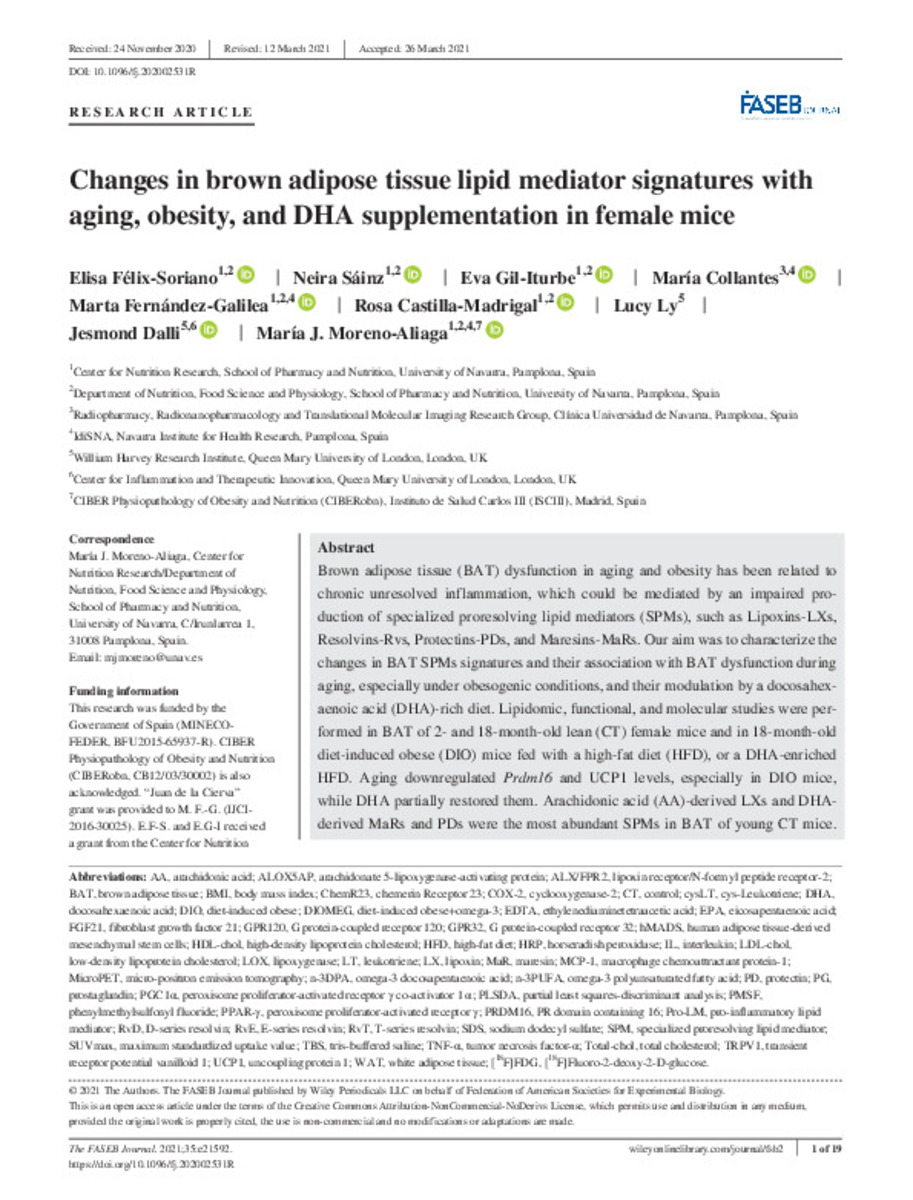Changes in brown adipose tissue lipid mediator signatures with aging, obesity, and DHA supplementation in female mice
Keywords:
Aging
Brown adipose tissue
DHA
Lipidomic
Obesity
Proresolving lipid mediators
Note:
This is an open access article under the terms of the Creative Commons Attribution-NonCommercial-NoDerivs License
Citation:
Félix-Soriano, E. (Elisa); Sainz, N. (Neira); Gil-Iturbe, E. (Eva); et al. "Changes in brown adipose tissue lipid mediator signatures with aging, obesity, and DHA supplementation in female mice". The FASEB Jorunal. 35, 2021, e21592
Statistics and impact
0 citas en

0 citas en

Items in Dadun are protected by copyright, with all rights reserved, unless otherwise indicated.








